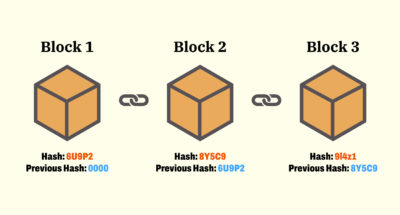Introduction to Blockchain
- General
Introduction to Blockchain
What Is Blockchain Technology?
Blockchain- Despite the inherent ‘Block’ in it, the name has traversed more miles than any other technical term in the recent past. It is echoing in almost all existing IT infrastructures; posing a potential threat to the very existence of the present establishments.
Blockchain is a method of recording information that makes it impossible or difficult for the system to be changed, hacked, or manipulated. A blockchain is a distributed ledger that duplicates and distributes transactions across the network of computers participating in the blockchain.
Blockchain is a digital database that stores records in chronological order. Information on a blockchain is kept in “blocks” linked to one another on a “chain” through shared mathematical algorithms. Blocks contain data, usually transaction records, including the sender and receiver of a transaction, a timestamp and the amount and type of currency sent.

How does blockchain work?
Blocks in a blockchain contain more than just transaction data; they also carry a hash. The mathematical procedures discussed above are known as cryptographic hash functions, or hashes. These play an important function in blockchain systems and are the reason blockchain operates in the first place.
Hashes are represented on a block as a changeable series of numbers and letters, such as 9010RFLG07LDD492K8381O82P78C29QWMN02C1051B6624E99. This number-letter combination is formed from a block’s data and serves as its digital signature.
Each block in the chain includes the hash of the preceding block. This is how blocks are connected and blockchain networks keep their integrity. Any changes to the information within a block would modify the hash, which would raise a red signal for others on the network.
The blockchain transaction procedure may be summarised as follows:
1. Transaction facilitation: A new transaction joins the blockchain network. All information that must be transferred is encrypted twice using public and private keys.
2. Transaction verification: The transaction is then broadcast to a global network of peer-to-peer computers. All nodes in the network will verify the transaction’s authenticity, such as if a sufficient balance is available to complete the transaction.
3. Block formation: In a normal blockchain network, there are many nodes and numerous transactions are validated at the same time. The transaction will be added to the mem pool once it has been confirmed and certified authentic. All the verified transactions at a particular node form a mem pool and such multiple mem pools form a block.
4. Consensus Algorithm: The nodes that compose a block will attempt to permanently add the block to the blockchain network. However, allowing every node to contribute blocks in this manner will disrupt the blockchain network’s operation. To address this issue, nodes employ a consensus process to verify that every new block added to the Blockchain is the one and only version of the truth agreed upon by all nodes in the Blockchain, and that only a valid block is safely linked to the Blockchain. The node that is selected to add a block to the blockchain will earn a reward and so we name them “miners”. The consensus algorithm generates a hash code for the block, which is necessary to add the block to the blockchain.
5. Adding a new block to the blockchain: Once the newly formed block has received its hash value and has been authenticated, it is ready to be added to the blockchain. Every block contains a hash value from the preceding block, and this is how the blocks are cryptographically connected to build a blockchain. A new block is added to the open end of the blockchain.
6. Transaction completed: As soon as the block is uploaded to the blockchain, the transaction is completed, and the contents of the transaction are permanently saved in the blockchain. Anyone can fetch the details of the transaction and confirm the transaction.